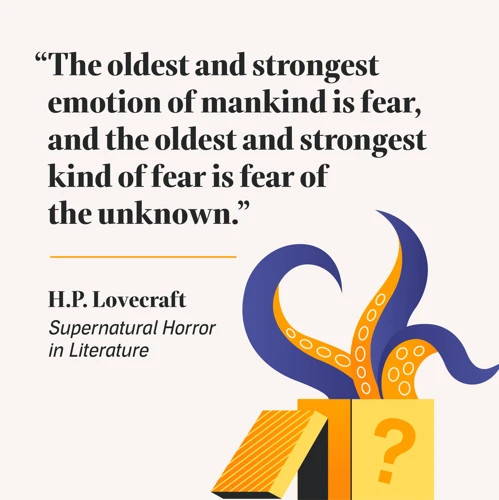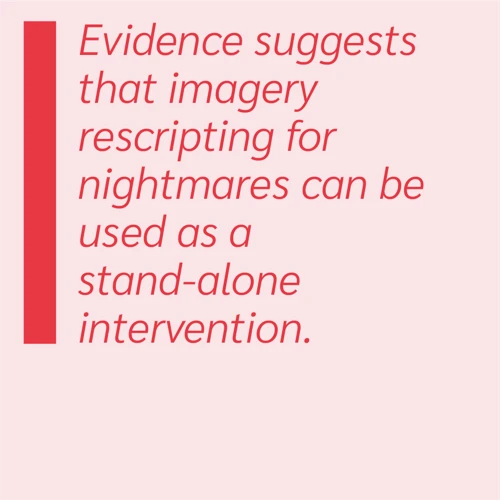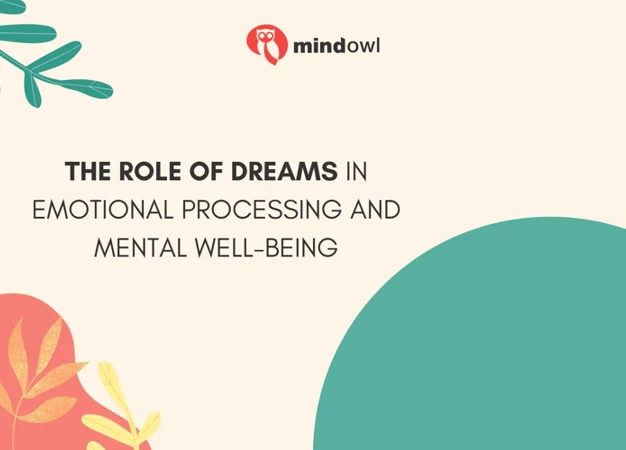Understanding Nightmares

Nightmares, those haunting nocturnal episodes, hold a captivating enigma that begs us to unravel their mysteries. To truly understand nightmares, we must first grasp their diverse forms and manifestations. Nightmares in children, for instance, often depict their growing fears and anxieties as they navigate the complexities of the world. On the other hand, adults may experience nightmares that serve as a source of creative inspiration, as explored in our previous article on the creative process and nightmares. Additionally, there exists a strong link between nightmares and anxiety disorders, where recurrent distressing dreams become an integral part of the condition. By delving into these multifaceted aspects of nightmares, we can begin to unravel the intricate mechanisms behind these unsettling yet thought-provoking experiences.
Definition of Nightmares
Nightmares can be described as vivid, disturbing dreams that bring about feelings of fear, terror, or anxiety. They commonly occur during the rapid eye movement (REM) stage of sleep, which is associated with a higher level of brain activity and intense emotional experiences. Unlike regular dreams, nightmares often involve a threat or danger to the dreamer, evoking strong negative emotions and causing significant distress upon awakening. These dreams are characterized by their ability to create a sense of unease or terror, lingering long after the dreamer is awake. Nightmares can vary in intensity and content, but they typically provoke a strong emotional response due to their vivid and distressing nature. They may involve recurrent themes or depict personal fears and anxieties.
Types of Nightmares
When it comes to nightmares, there is a wide range of themes and scenarios that can unfold during our slumber. Each type of nightmare presents a unique blend of fear, anxiety, and psychological symbolism. Here are some common types of nightmares that people may experience:
- Anxiety Dreams: These nightmares are often triggered by stress and can manifest as overwhelming feelings of unease, worry, or impending doom. They may reflect real-life concerns and uncertainties, highlighting the need to address and confront underlying anxieties.
- Nightmares of Falling: Falling nightmares evoke intense feelings of vulnerability and loss of control. These dreams often symbolize insecurities, fear of failure, or a lack of stability in one’s waking life.
- Monster and Creature Nightmares: These nightmares involve menacing and terrifying creatures, representing suppressed fears or unresolved emotional issues. They can serve as metaphors for the challenges and obstacles we face in life.
- Nightmares of Being Chased: Being pursued or chased in a nightmare reflects a sense of being hounded by problems, fears, or unresolved issues. These dreams may indicate a need to confront or resolve these problems in order to find peace and resolution.
- Nightmares of Being Trapped: These dreams often involve being confined, trapped, or unable to escape, symbolizing feelings of being stuck, helpless, or overwhelmed in waking life. These nightmares may suggest a desire for freedom and the need to break free from difficult situations or stifling circumstances.
- Nightmares of Losing Loved Ones: Dreams of losing loved ones can be deeply distressing and can reflect fears of abandonment, loss, or separation anxiety. These nightmares may highlight the importance of addressing and nurturing our relationships.
Remember, each individual’s nightmare experiences are unique, and the symbolism and emotions connected to these dreams can vary. By recognizing the different types of nightmares and the underlying messages they may convey, we can gain insight into our fears, emotions, and unresolved issues, ultimately leading to personal growth and emotional healing.
Emotions and Fears

Our emotions and fears form the very essence of our human experience, shaping our thoughts, actions, and interactions with the world around us. Emotional processing plays a crucial role in maintaining our mental well-being, allowing us to understand and navigate our emotions effectively. When it comes to fears, they serve as protective mechanisms that alert us to potential dangers. However, these emotions and fears can sometimes become overwhelming, leading to a need for processing and understanding. Through the dynamics of emotional processing, we can explore the depths of our fears and anxieties, unravel their underlying causes, and ultimately find healing and growth. Whether it’s through therapy, self-reflection, or the exploration of our dreams and nightmares, acknowledging and confront our emotions and fears is an essential step towards achieving emotional resilience and balance.
Importance of Emotional Processing
The importance of emotional processing cannot be overstated when it comes to understanding nightmares and their significance. Emotional processing involves the ability to recognize, understand, and effectively deal with our emotions. It is a vital aspect of our mental and emotional well-being. When emotions are experienced but not properly processed, they can become trapped within us, leading to a range of psychological issues. Nightmares provide a unique opportunity for emotional processing, as they often tap into our deepest fears and anxieties. Through the intense emotions experienced during nightmares, we are given the chance to confront and process these emotions in a safe and controlled environment. This process allows us to gain insights into our emotional landscape, unravel hidden fears, and ultimately promote healing and growth. By actively engaging in emotional processing, we can develop a greater understanding of ourselves and cultivate emotional resilience.
The Relationship between Emotions and Fears
The relationship between emotions and fears is a complex and intertwined one. Emotions, such as fear, are natural human responses to perceived threats or dangers. They serve as a protective mechanism, alerting us to potential harm and triggering a physiological and psychological response. Fears, on the other hand, are specific objects, situations, or concepts that elicit a strong emotional response. When it comes to nightmares, the connection between emotions and fears becomes even more pronounced. Nightmares often tap into our deepest fears, amplifying them through vivid and terrifying imagery. These dreams have the power to evoke intense emotions such as fear, anxiety, and despair, allowing us to experience and process these feelings in a controlled environment. Through the process of dreaming, our subconscious mind confronts and explores these emotional states, offering a unique opportunity for self-reflection and growth. Nightmares can also shed light on underlying fears that we may not be consciously aware of, bringing them to the surface for examination and resolution. By examining the relationship between emotions and fears in the context of nightmares, we gain valuable insights into our psyche and can begin to navigate and understand our emotional landscapes more effectively.
The Role of Nightmares

Nightmares serve a crucial role in our emotional and psychological well-being as they provide a platform for the processing and release of intense emotions. They act as a venting mechanism for the accumulated stress, fears, and anxieties that we face in our waking lives. During REM sleep, when dreams occur most frequently, our brains create vivid and gruesome scenarios that reflect our deepest fears and unaddressed traumas. This emotional release through nightmares allows us to confront and process these intense emotions in a safe and controlled environment. Nightmares also act as evident manifestations of our fears, bringing them to the forefront of our consciousness and providing an opportunity for us to address and overcome them. Through this turbulent and unsettling journey, nightmares become a catalyst for resolving trauma, managing anxiety, and fostering personal growth.
Emotional Release through Nightmares
When it comes to nightmares, one of their significant roles is facilitating emotional release. These vivid and intense dreams provide an outlet for the pent-up emotions and fears that may be residing within us. During sleep, our subconscious mind becomes more active, allowing suppressed emotions to surface and be processed. Nightmares serve as a conduit for these emotions, providing a safe space for us to experience and confront our deepest fears. Think of it as a therapeutic purging of emotions that may be too overwhelming to face in our waking lives. By reliving and processing these emotions in the form of nightmares, we can release the emotional tension that may have been weighing us down.
Nightmares can be especially helpful in situations where we have experienced traumatic events. They allow us to revisit and process the traumatic experience in a controlled environment. This emotional release aids in the healing process, as it gives us the opportunity to confront the emotions associated with the trauma and gradually work through them. Through the symbolic nature of nightmares, our subconscious mind can express and explore the complex emotions and fears related to the trauma, ultimately leading to emotional healing and resolution.
It’s important to note that while nightmares can be intense and distressing, they are a natural part of our emotional processing mechanism. They offer an invaluable opportunity for emotional catharsis and growth. By actively engaging with the emotions and themes present in our nightmares, we can gain insights into our fears and take steps towards healing and personal development.
Nightmares as Evident Fears
Nightmares serve as powerful manifestations of our deepest fears, bringing them vividly to life in the realm of dreams. When we experience nightmares, we are confronted with images, scenarios, and emotions that reflect our most profound anxieties. This confrontation allows us to come face-to-face with our fears in a way that is often difficult to achieve in conscious life. Nightmares have a unique ability to tap into our subconscious mind, bypassing our rational defenses and bringing our fears to the forefront. Whether it’s a recurring dream about falling from great heights, being chased by an unknown entity, or finding ourselves in a life-threatening situation, these nightmares expose the very core of our fears. They force us to acknowledge, process, and ultimately confront our deep-seated anxieties. By exploring the themes and symbols present in our nightmares, we can gain valuable insights into the fears that impact our waking lives. This awareness enables us to work towards understanding and overcoming these fears, leading to personal growth and emotional healing. So, next time you wake up in a cold sweat from a nightmare, remember that it may just be your mind’s way of bringing your fears to the surface, begging for acknowledgment and resolution.
Resolving Trauma and Anxiety
Trauma and anxiety can leave deep imprints within our psyche, causing distress and hindering our overall well-being. Fortunately, nightmares can play a crucial role in the process of resolving these emotional wounds. When we experience a nightmare related to a traumatic event or an anxious thought, it presents an opportunity for our subconscious mind to confront and process the lingering emotions tied to that experience. Through the vivid and intense imagery that nightmares often bring, our minds are able to engage with these unresolved emotions in a safe, albeit unsettling, manner. This process of emotional release allows us to gradually confront and make sense of our trauma and anxiety, facilitating healing and recovery. It is important to note that nightmares alone may not be sufficient for resolving deep-seated trauma or anxiety, but they can serve as a catalyst for further therapeutic work. Seeking professional help, such as therapy or counseling, can provide the necessary support and guidance in navigating through these challenging emotions. By taking proactive steps towards resolving trauma and anxiety, nightmares can become a valuable tool in our journey towards healing and reclaiming our emotional well-being.
Nightmares as Therapeutic Tools

Nightmares, often viewed as harbingers of fear and distress, also possess a hidden therapeutic potential. Nightmare Integration Therapy is a revolutionary approach that harnesses the power of nightmares to aid in healing. This therapy involves analyzing the content and symbolism of recurrent nightmares, allowing individuals to confront and process their deepest fears in a controlled and supportive environment. In addition to professional therapy, dream journaling serves as an invaluable tool for analyzing nightmares and unraveling their underlying messages. By documenting and reflecting on the details of these unsettling dreams, individuals gain insight into their subconscious minds and can begin to decode the complex emotions and fears embedded within. By acknowledging nightmares as more than mere disturbances, we can embrace their potential as therapeutic tools for personal growth and transformation.
Nightmare Integration Therapy
Nightmare Integration Therapy (NIT) is a therapeutic approach that harnesses the power of nightmares to promote healing and personal growth. NIT focuses on understanding and integrating the messages and emotions conveyed by nightmares. It involves working closely with a therapist who specializes in dream analysis and trauma resolution. During NIT sessions, the therapist guides the individual in exploring the symbolism, themes, and underlying emotions of their nightmares. This process allows the individual to gain insight into their fears, traumas, and unresolved issues that may be hindering their overall well-being.
NIT employs various techniques to facilitate integration and healing. One such technique is imagery rehearsal, where the individual revisits the nightmare with a goal of changing the outcome to something positive or empowering. This process helps reframe the traumatic experience and encourages the brain to create new neural pathways associated with resilience and growth. Another technique used in NIT is somatic experiencing, which focuses on releasing stored physical and emotional tension associated with the nightmares.
Through Nightmare Integration Therapy, individuals can gain a deeper understanding of their fears and traumatic experiences while actively engaging in the healing process. The integration of nightmares into therapy empowers individuals to transform their fears into catalysts for personal growth and self-discovery. It offers a unique and valuable opportunity to confront and process unresolved trauma, leading to profound emotional healing and a sense of empowerment.
Dream Journaling for Analyzing Nightmares
Dream journaling is a powerful technique that can aid in the analysis and understanding of nightmares. By keeping a journal beside your bed and jotting down your dreams immediately upon waking, you can capture the vivid details and emotions fresh in your mind. The act of writing down your nightmares not only serves as a way to record them but also sparks a deeper reflection. As you revisit your entries over time, patterns and themes may emerge, providing valuable insights into the underlying fears and emotions that your nightmares are attempting to convey. The journal becomes a repository of your subconscious mind, offering a glimpse into the hidden recesses of your psyche. Drawing connections between your nightmares and real-life experiences can be enlightening and empowering. It’s important to write down not only the events of the dream but also the emotions you felt during the dream and upon waking. These emotional markers can help you identify recurrent themes or triggers. Additionally, analyzing the symbols and imagery within your nightmares can provide further clues about their meaning. Keeping a dream journal can act as a powerful tool to navigate and decode the complex messages woven within your nightmares, ultimately aiding in personal growth and self-discovery.
Overcoming Fears and Healing
As unsettling as nightmares can be, they also provide an opportunity for us to confront and overcome our deepest fears, leading to personal growth and healing. To begin this transformative journey, it is crucial to recognize patterns within our nightmares. By keeping a dream journal and documenting recurring themes, symbols, and emotions, we can gain insight into the root of our fears. Armed with this knowledge, we can actively confront and process our fears in a safe space, either through self-reflection or by seeking support from loved ones. It is important to remember that professional help is always available for those struggling with overwhelming or persistent nightmares. A therapist specializing in dream analysis and trauma can guide individuals through the healing process and help them develop effective coping strategies. Embracing our nightmares as catalysts for growth and emotional healing allows us to break free from the shackles of fear and move forward on the path towards a more empowered and fulfilling life.
Recognizing Patterns in Nightmares
Recognizing patterns in nightmares can be a crucial step in understanding and addressing the underlying fears and emotions they represent. Nightmares often contain recurring themes, symbols, or situations that can provide valuable insights into our subconscious mind. By paying close attention to these patterns, we can identify common threads that connect our dreams and begin to decipher their meaning. For example, a recurring image of falling may signify a deep-seated fear of losing control or a lack of stability in our waking lives. Similarly, encountering a specific person or place in multiple nightmares may indicate unresolved issues or unresolved conflicts in our relationships. Patterns can also extend beyond the dream itself to include recurring emotions or physical sensations accompanying the nightmares. By recognizing these patterns, we can gain a better understanding of the underlying fears and emotions that need to be addressed for healing and personal growth.
Confronting and Processing Fears
Confronting and processing fears is a crucial step in overcoming the grip nightmares can have on our emotional well-being. When we face our fears head-on, we take away their power and gain a sense of control over them. One effective technique for confronting fears is through exposure therapy, where individuals gradually expose themselves to the objects or situations that trigger their fear. This approach allows for desensitization and helps to rewire the brain’s response to fear-inducing stimuli. Self-reflection is another powerful tool in the process of confronting fears. By journaling or engaging in introspective practices, we can identify the root causes of our fears and gain insight into the underlying emotions associated with them. This self-awareness can lead to profound healing and growth. Additionally, mindfulness and meditation practices can aid in the process of confronting and processing fears by cultivating a state of calm and helping individuals develop a greater understanding and acceptance of their fears. Seeking support from loved ones or a mental health professional can also provide guidance and assistance in navigating the process of confronting fears. By actively engaging in these methods, we can confront our fears, process the emotions they evoke, and ultimately find a path to healing and liberation from the grip of nightmares.
Seeking Professional Help
Seeking professional help can be a vital step in the journey towards overcoming nightmares and healing from the underlying fears and traumas they represent. Therapists and psychologists who specialize in dream analysis and trauma therapy can provide valuable guidance and support in navigating the complex emotions tied to nightmares. They possess the expertise to help individuals process their fears and traumas in a safe and controlled environment. Through various therapeutic modalities such as cognitive-behavioral therapy (CBT), eye movement desensitization and reprocessing (EMDR), or exposure therapy, professionals can assist individuals in identifying and addressing the root causes of their nightmares. These techniques aim to gradually desensitize patients to their fears, allowing them to regain control over their dreams and break free from the recurring nightmares. Therapists may also explore other factors such as sleep disorders or underlying mental health conditions that could contribute to the prevalence of nightmares. By seeking the guidance of a qualified professional, individuals can embark on a path of healing and restoration, reclaiming peaceful nights and emotional well-being.
Conclusion
Frequently Asked Questions
What causes nightmares?
Nightmares can be triggered by a variety of factors, including stress, trauma, medication side effects, sleep disorders, and even certain foods or substances.
Can nightmares be a sign of mental health issues?
Yes, recurrent nightmares can sometimes indicate underlying mental health conditions, such as anxiety disorders, post-traumatic stress disorder (PTSD), or depression.
Are nightmares more common in children or adults?
Nightmares are more common in children, as their developing imagination and cognitive abilities can make them more susceptible to vivid and frightening dreams. However, adults can also experience nightmares, especially during times of stress or emotional turmoil.
Do nightmares serve any purpose?
Yes, nightmares serve a purpose in our emotional processing. They can help us process and release repressed emotions, confront our fears, and even act as a warning signal for potential dangers.
How can nightmares be managed or prevented?
Managing nightmares involves practicing good sleep hygiene, reducing stress levels, avoiding certain triggers, and addressing any underlying psychological or medical conditions through therapy or medication when necessary.
Are all nightmares scary or negative?
Not all nightmares are scary or negative. Some nightmares can be neutral or even positive, serving as a source of creative inspiration or helping us process complex emotions.
Can lucid dreaming techniques be used to control nightmares?
Yes, techniques such as lucid dreaming can be utilized to gain control over nightmares. By becoming aware that you are dreaming, you can actively change the dream narrative or wake yourself up from the nightmare.
What is the difference between a nightmare and a night terror?
A nightmare is a distressing dream that usually occurs during REM sleep and often leads to waking up. Night terrors, on the other hand, are episodes of intense fear or terror that occur during non-REM sleep and are often accompanied by screaming, sweating, and physical agitation.
Can recurring nightmares be a sign of unresolved trauma?
Yes, recurring nightmares can be a sign of unresolved trauma. They may serve as a way for the mind to continue processing and attempting to resolve traumatic experiences that have not been fully addressed.
When should someone seek professional help for nightmares?
If nightmares are significantly interfering with sleep, daily functioning, or overall well-being, it may be beneficial to seek professional help from a therapist or sleep specialist who can provide guidance and support in managing and understanding nightmares.








